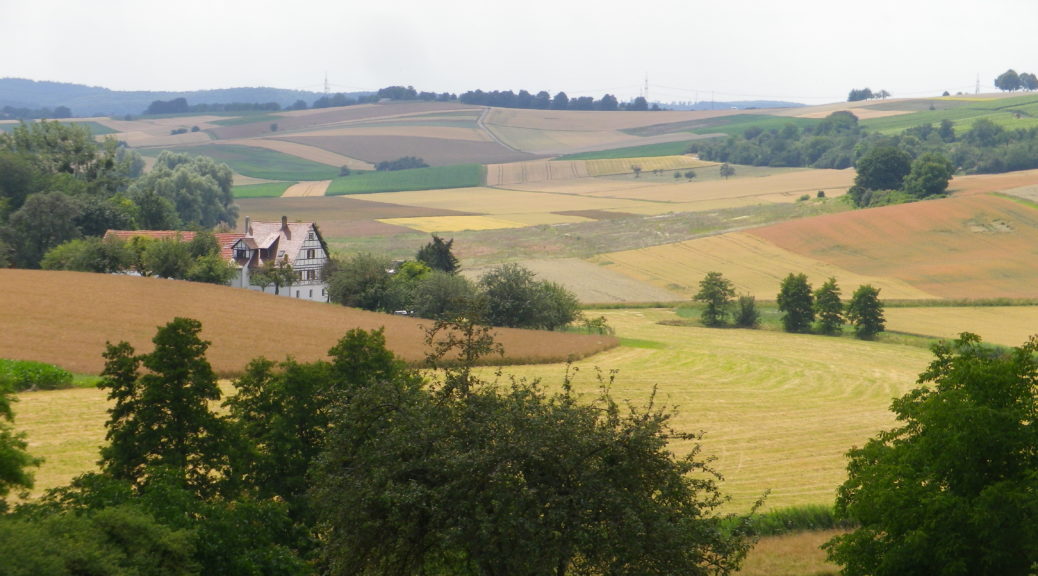I must confess: I was not looking forward to this bike ride. It is not in a well-known wine area; actually, it’s not in a well-known area, period. The day was overcast and seemed to threaten rain. Once on the ground though, my mood improved, and kept improving as the miles sped by. (Or in some cases, crept by, as this is a hilly area to traverse on bicycle, the steep, hill-without-end between Grossvillars and Sternenfels coming to mind.)
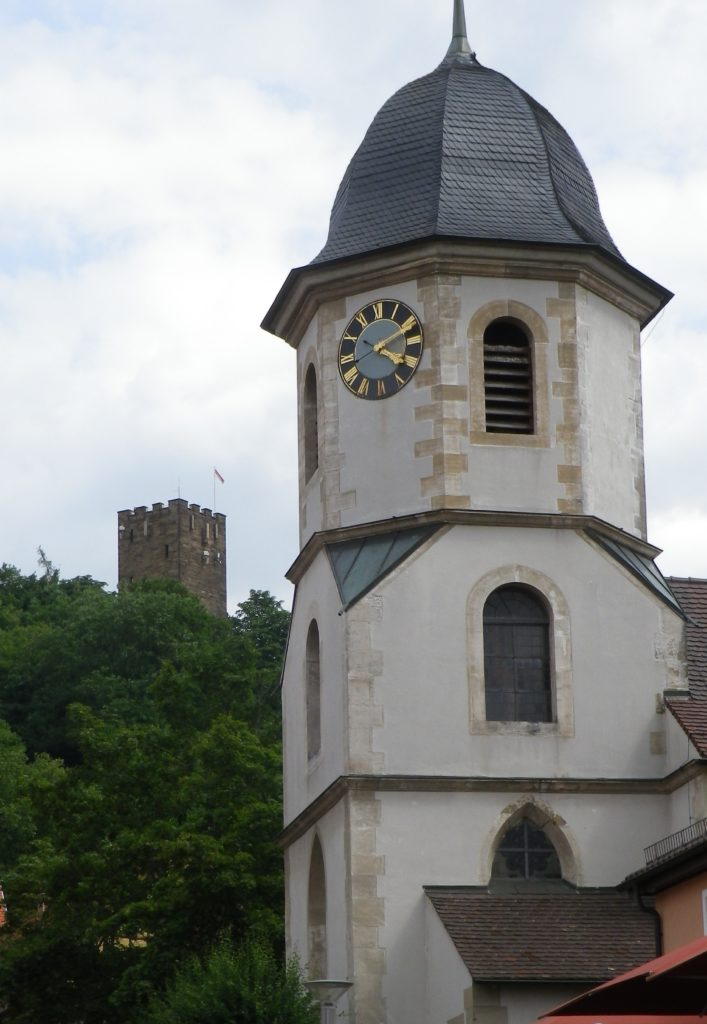
In the first place, there was tremendous diversity. Diversity of trail surfaces, to name one. I went along everything from packed earth, to tarmac, to crushed stone, to cement. My hybrid bike tires managed them all well enough though. The surfaces were, with only one short exception, very well maintained, and this considering that the much of this trail passed through forests, and along low-lying wet lands.
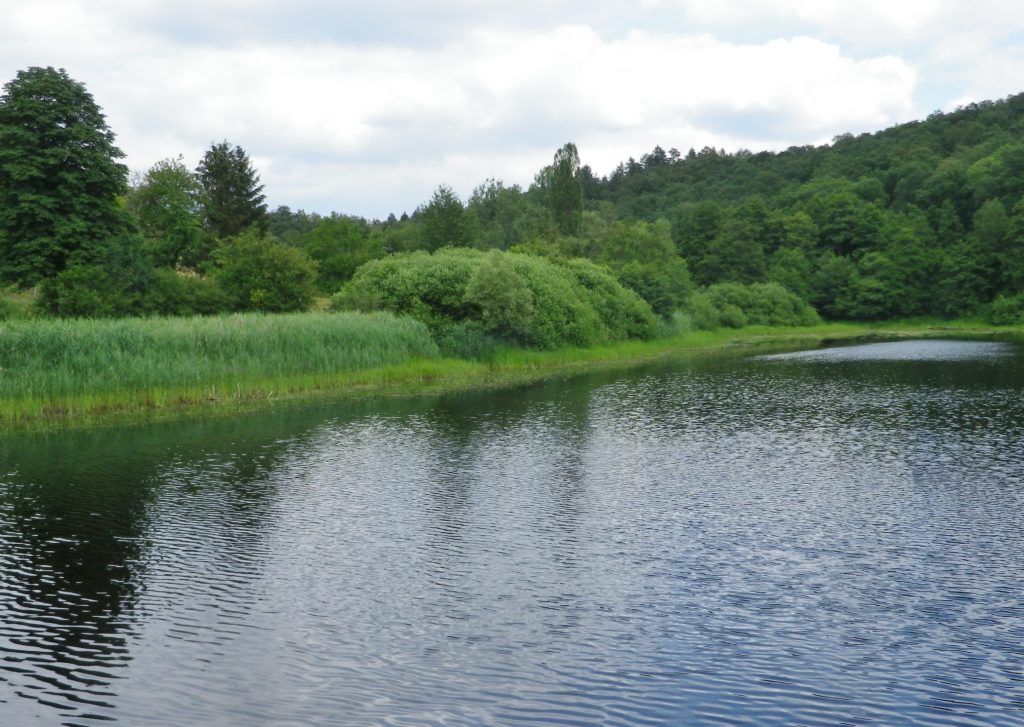
Then there was such a diversity of scenery, that it would have been difficult to find more. I loved how this circuit trail went from town to village, all of them untouched by tourists and (too much) time, and all deserving of a stop along the way. Oberderdingen, the trail’s official start, was a real delight to explore, especially around the Amthof, surrounded by its walls and former monastic buildings. Aside from the monastery and other churches, medieval buildings abounded along the trail. Many of the houses, especially in Kurnbach, are lovingly maintained fachwerk (half timbered) houses. Colorful and distinctive, they take you back to the Middle Ages in a blink of the eye.
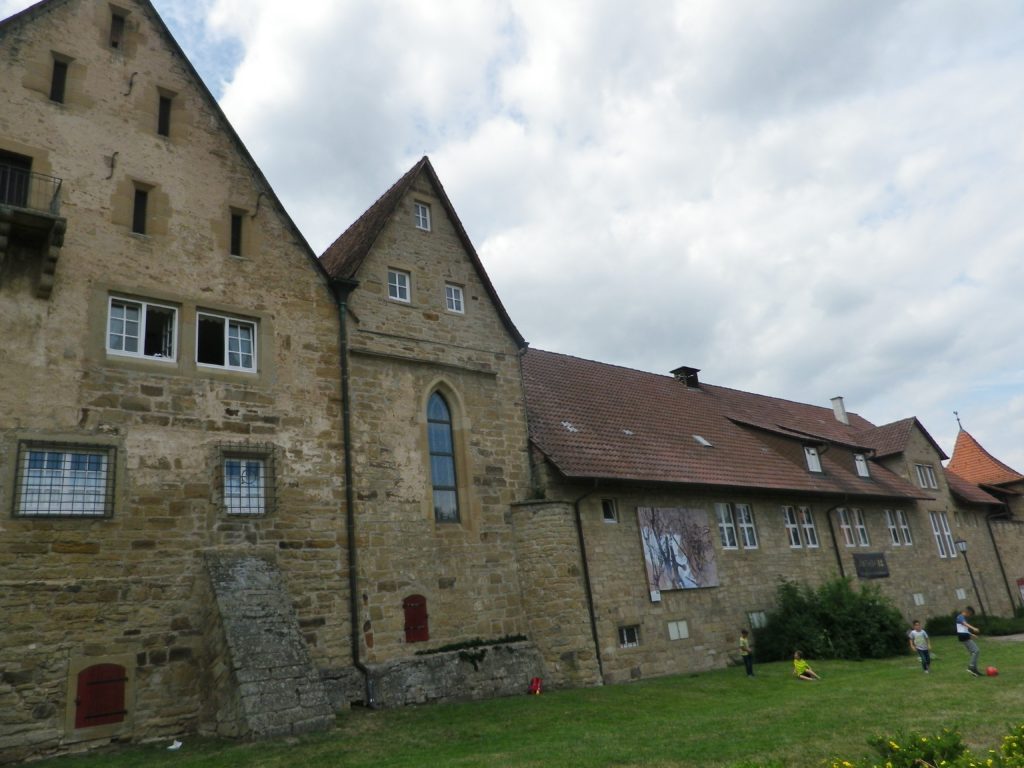
And, of course, this being Germany, there were dramatic castles to see. Perhaps the most dramatic was Burg Ravensburg, in Sulzfeld, where the current occupant continues the wine-making traditions of the old estate, and with good result, judging from the taste. Later eras added Renaissance-style palaces, albeit modest ones, to the mix, such as the former one in Ochsenburg. A ghost of its former elegance still survives in the façade.
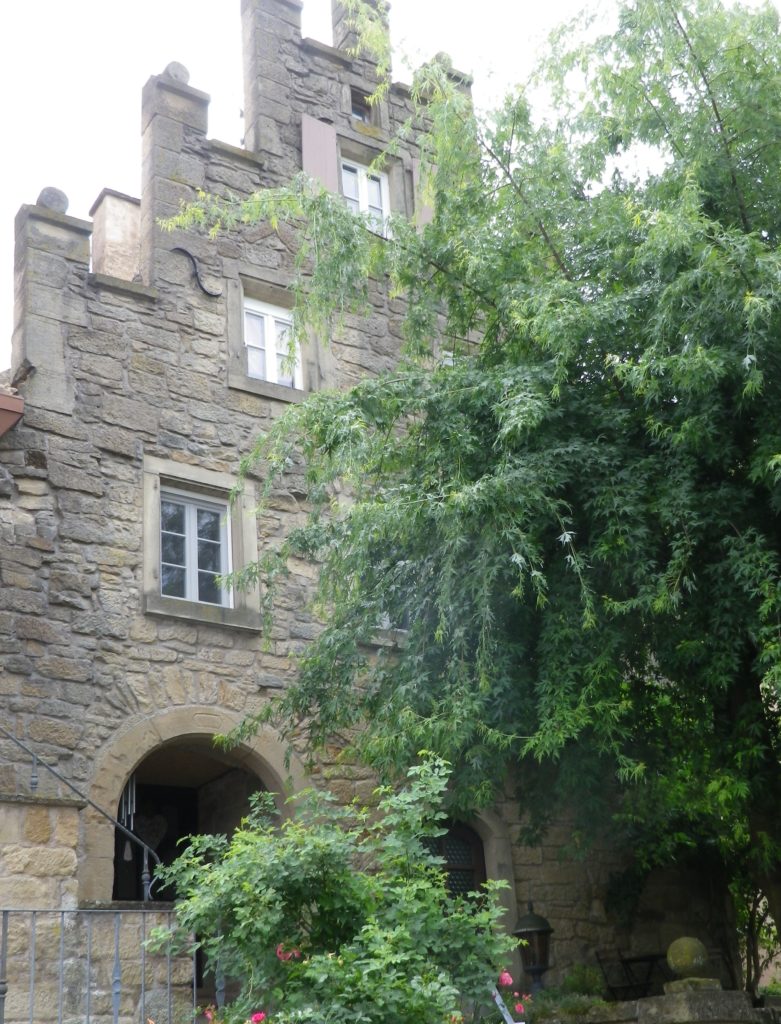
The scenery changed a lot as well. Be it cycling through significant stretches of cool, dark forests, atop ridgelines, or along narrow valleys carrying streams. Most unusually for wine country, this trail went past three still beautiful ponds. Suddenly out of the woods, the trail entered fields of wheat and rye, past old fruit trees lining the lane. And, of course, the trail, named for the numerous wine taverns found along the way, also went past lots of vineyards, clinging to the sides of hills everywhere.
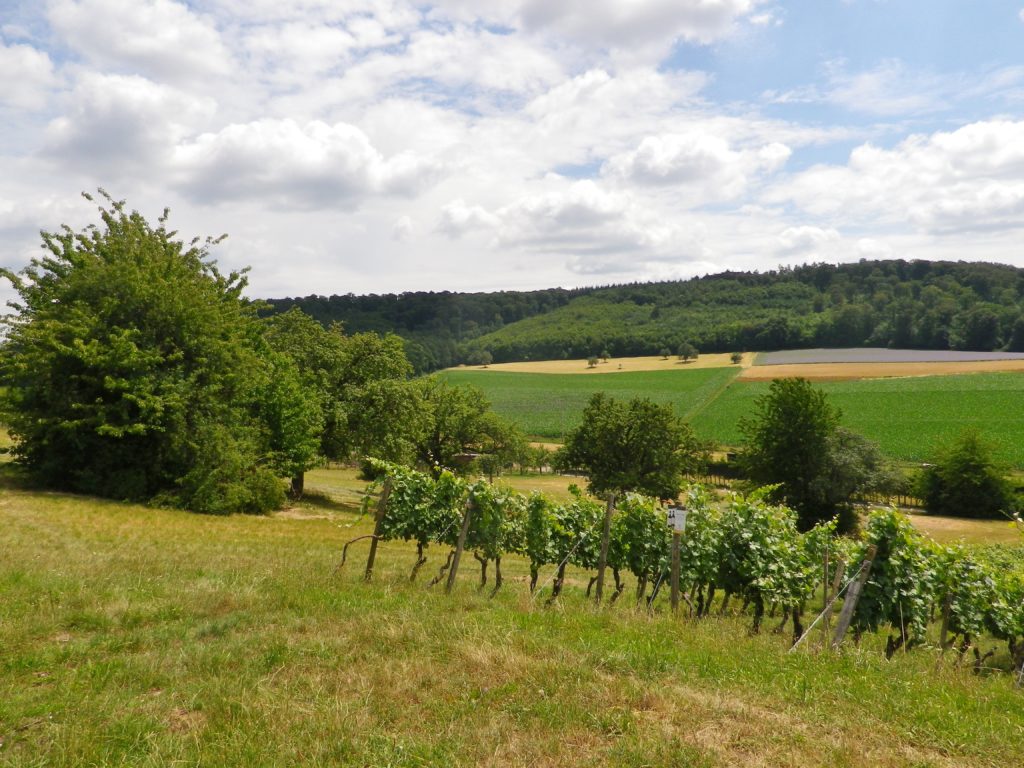
Finally, the wine terroir was a real patchwork of regions, districts and vineyards. Kurnbach, the last town on the circuit, is but three kilometers away from Oberderdingen, in the Wuerttemberg wine region. Yet Kurnbach falls within the Baden wine region, along with Sulzfeld. Sternenfels, also only about three kilometers away, falls in the Wuerttemberg wine region, Stromberg district, like Oberderdingen. Cross over the wooded ridgeline separating Sternenfels from Leonbronn, there is yet another change as Leonbronn lies in Wuerttemberg’s Heuchelberg wine district.
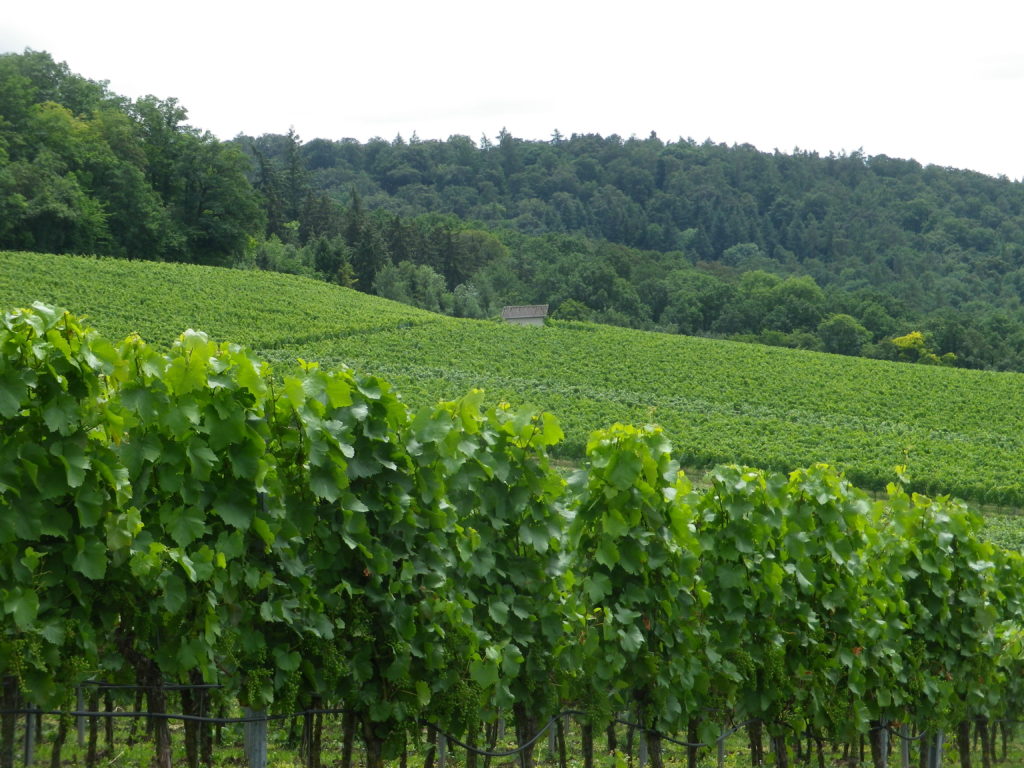
Such an interesting variety in soils, microclimates and exposures, resulting in such a variety of wines, found in so many wine taverns, all in one delightful trail not to be missed!
